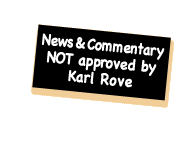Great article by Alison Frankel…
Former AIG honcho Maurice “Hank” Greenberg’s $50 billion Fifth Amendment claims against the U.S. government may be, as New Yorker writer John Cassidy recently said, more of a comic extravaganza than a legitimate case, but there’s no doubt that the Greenberg trial underway in the U.S. Court of Federal Claims will contribute to the historical record of the government’s response to the 2008 economic crisis. Former U.S. Treasury Secretary Hank Paulson testified Monday, and his successor, Tim Geithner, and former U.S. Federal Reserve Chairman Ben Bernanke are also on Greenberg’s witness list. We can all thank Greenberg for muscling their sworn testimony into public, regardless of the crotchety old rich guy’s gall and his long odds of actually winning.
Meanwhile, there’s a much less celebrated case over the 2008 economic crisis underway in federal district court in Washington, D.C. It doesn’t have the glamour of David Boies of Boies, Schiller & Flexner (Hank Greenberg’s lawyer) grilling former Cabinet officials over the AIG bailout, but it involves between $6 billion and $10 billion in real money — and it’s also contributing real facts to what we know about how government officials in the thick of bailout frenzy implemented policies set at the highest levels.
I’m talking about litigation between JPMorgan Chase and the Federal Deposit Insurance Corporation over which of them was left holding the scorching hot potato of liability for Washington Mutual’s misrepresented mortgage-backed securities. As you may recall, as WaMu was collapsing in 2008, the federal government pushed JPMorgan to acquire the Seattle-based bank. One of the many branches of subsequent litigation over WaMu’s failure was a suit by Deutsche Bank, as the trustee overseeing many WaMu MBS, against JPMorgan, asserting that JPMorgan was on the hook to MBS investors for breaches in contractual representations and warranties about the securities. Deutsche Bank said JPMorgan owed WaMu MBS investors as much as $10 billion for their put-back claims.
JPMorgan and its lawyers at Sullivan & Cromwell countered that the FDIC – and not the bank – was liable for put-backs on private-label mortgage-backed securities. It sued in Washington federal district court for a declaration that when the bank paid $1.89 billion to take WaMu off of the FDIC’s hands in late September 2008, liability for MBS representations and warranties was not part of the deal. Those obligations, according to JPMorgan, stayed with the FDIC.
Last Friday, the two sides filed mostly unredacted summary judgment briefs with U.S. District JudgeRosemary Collyer, adding layers of detail to what was previously known about JPMorgan’s WaMu acquisition. Obviously, the briefs center on the limited contractual question of whether the FDIC ditched put-back liability in the WaMu sale, but the hundreds of pages JPMorgan and the FDIC’s lawyers at Hughes Hubbard & Reed have generated on this seemingly straightforward contract interpretation show the loopholes that open when economic chaos looms, as it did when the WaMu deal was being negotiated.
Three of the most interesting revelations involve emails within the FDIC about whether put-back obligations would transfer to JPMorgan, a seemingly contradictory email from the FDIC to the bank, and evidence about the pressure Fannie Mae and Freddie Mac exerted on JPMorgan as the bank tried to make its investment in WaMu begin to pay off.
Read on.


